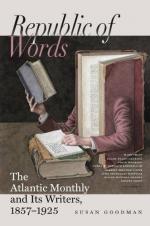This is the ground of the seeming injustice to Sculpture at the time of the Revival. Its relative excellence was undervalued, because what it could do was not quite to the point. While the painters went on producing their antediluvian forms, the sculptors saw things much more as we do,—yet the paintings seemed the most life-like. It is astonishing, when we remember that Nicola was older than Cimabue, Giovanni than Giotto, Ghiberti than Fra Angelico, that the painters did not learn from the sculptors more of the actual appearance of things. It is still more astonishing that it is the painters that get all the praise for accuracy. Vasari is endless in his praises of Giotto, Spinello, Stefano, (called Scimia, or the Ape of Nature,) and a host of others, for accurate imitation. Giovanni Villani boasts that “it is our fellow-citizen Giotto who has portrayed most naturally every form and action.” Ghiberti finishes an admiring account of some paintings of Ambrogio Lorenzotto’s with the exclamation that it is truly marvellous to think that all this is only a picture. Few persons, probably, would see in the specimens of Ambrogio’s work that still remain anything wonderful for resemblance to Nature,—whilst in Ghiberti’s everybody acknowledges the astonishing truth of the detail. He tells us that he sought “to imitate Nature as far as was possible to him,”—but he seems not to be aware how much better he succeeded than the people he praises. Paolo Uccello, who was twenty years younger than Ghiberti, got his nickname from his skill in painting birds. But one would rather undertake to paint birds as well as Paolo than to carve them as well as Ghiberti.
We may learn here how little the demand to “imitate Nature” expresses what is intended. No accuracy, however demonstrable, will satisfy it. To interest me in a picture, it is not enough that something is as visible there as it is elsewhere; it must be something that I was already striving to see. It was not a greater circumstantiality of statement than was demanded, but greater directness,—that it should be relieved of what was unessential to its purpose, tending only to obscure it. A painting, however rude, has at least this negative merit, that, by the express substitution of the appearance for the actual image, needless entanglement in the material is avoided. Weight and bulk are not indeed annihilated, but they are no longer of primary importance, and thus less obstructive. The work gains precisely in what it gives up. By the flat omission of depth infinite depth is acquired,—by the ignoring of size the expression of size becomes possible; a mountain, for instance, which would be an absurdity in Sculpture is representable in Painting. Thus, instead of being more abstract than Sculpture, Painting is in truth less so, since what it omits is only negative to the purpose of Art.




